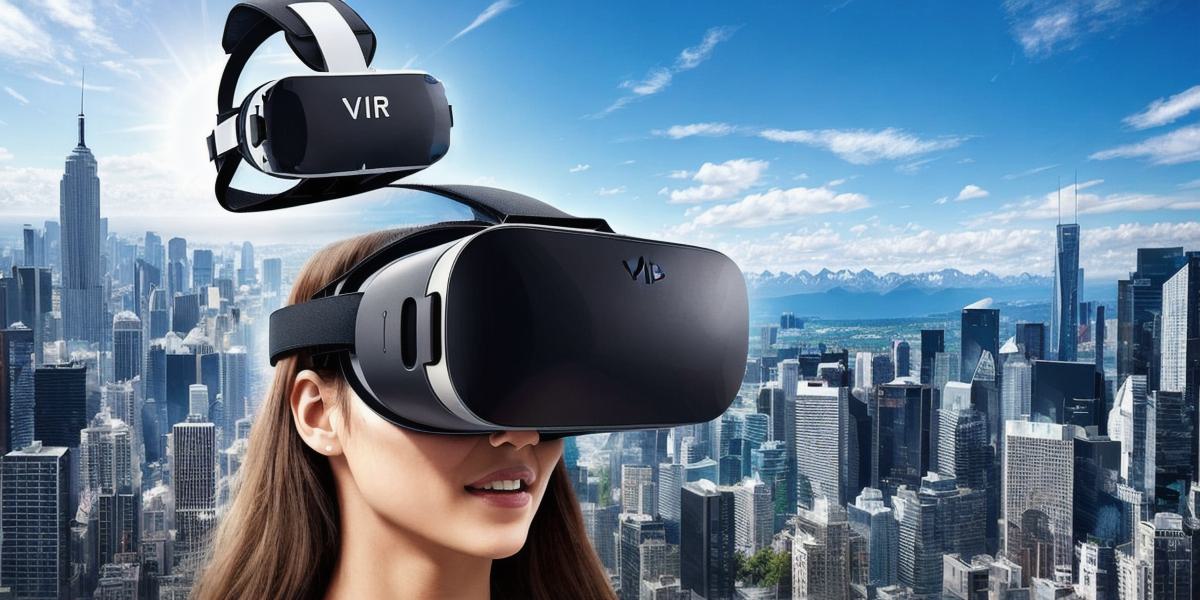Virtual Reality (VR) technology has been rapidly gaining popularity in recent years, with millions of people around the world using it for gaming, education, training, and more. In this article, we will explore the reasons behind the widespread adoption of VR technology and how it’s changing the way we interact with the digital world.
One of the main reasons why VR is so popular is its ability to provide an immersive experience that transports users into a virtual world. This sense of presence allows people to feel like they are really in the environment, which can be especially useful for gaming and entertainment purposes. For example, a study by the University of California, Irvine found that VR can increase user engagement and improve learning outcomes compared to traditional methods.
Another factor contributing to the popularity of VR is its ability to provide unique and memorable experiences. Whether it’s exploring ancient ruins or flying through space, VR allows users to experience things they may never be able to in real life. This sense of wonder and excitement can be particularly appealing to younger generations who are growing up with access to advanced technology.
In addition to gaming and entertainment, VR is also being used for practical purposes such as training and simulation. For example, pilots can use VR simulations to practice their flying skills without the risk of crashing an actual plane. Similarly, doctors can use VR simulations to practice surgeries and other medical procedures before performing them on real patients. These types of applications have the potential to save lives and improve overall performance in a variety of fields.
While there are many benefits to using VR technology, there are also some challenges that need to be addressed. One of the main concerns is the high cost of VR equipment, which can make it difficult for some people to access. Additionally, motion sickness can be a problem for some users, particularly when using VR for extended periods of time.
Despite these challenges, the popularity of VR technology continues to grow, and experts predict that its use will only continue to expand in the coming years. As the technology becomes more affordable and accessible, we can expect to see even more innovative uses for VR in a variety of industries, from education to healthcare to gaming.
In conclusion, there are many reasons why VR is so popular, including its ability to provide an immersive experience, unique and memorable experiences, practical applications, and the potential for continued growth and innovation. While there are challenges that need to be addressed, the benefits of using VR technology are clear, and we can expect to see its use continue to expand in the years ahead.
FAQs:
- What is Virtual Reality (VR) technology?
Virtual Reality (VR) technology creates an artificial environment that simulates a real-world experience. Users wear a headset or other device that tracks their movements and allows them to interact with the virtual world. - How does VR work?
VR technology uses sensors, cameras, and other equipment to track the user’s movements and create a realistic virtual environment. This can be achieved through various methods such as stereoscopic displays, motion capture, and haptic feedback. - What are some practical applications of VR technology?
VR technology has many practical applications in industries such as training, simulation, healthcare, education, and more. For example, pilots can use VR simulations to practice their flying skills, doctors can use VR simulations to practice surgeries, and students can use VR to learn about history or science in an immersive way. - What are some challenges associated with VR technology?
Some challenges associated with VR technology include high cost, motion sickness, and the need for specialized equipment. These challenges may limit accessibility for some people, but as the technology becomes more affordable and accessible, these challenges may be overcome.
